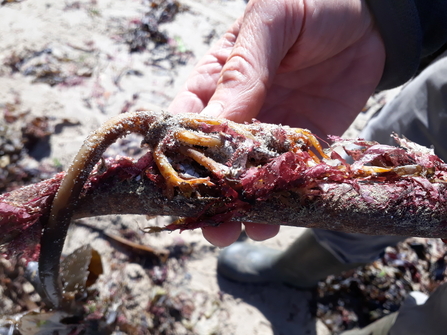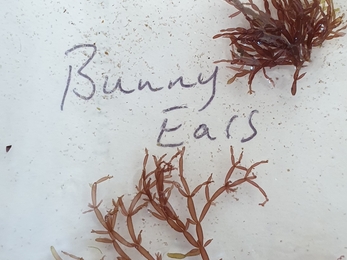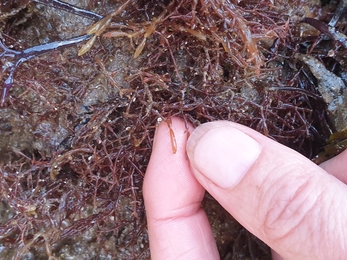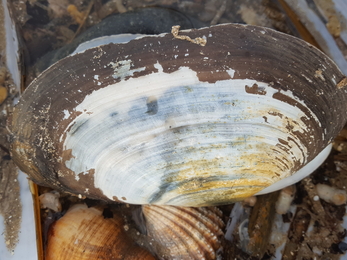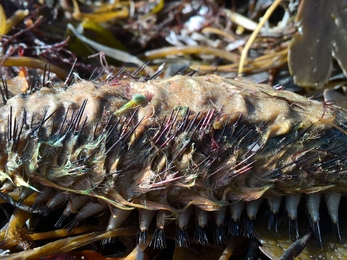The shores visited this month for the group surveys were Cemlyn (Anglesey terns SPA) and Porthor (Glannau Aberdaron SSSI). We also had three have-a-go surveys to encourage a few more to the group. These were carried out at Rhos-on-sea/Penrhyn Bay (Bae Lerpwl/Liverpool Bay SPA); Nefyn (Porth Dinllaen i Borth Pistyll SSSI) and Trearddur bay (Anglesey terns SPA). Finally, we had two amazing workshops, helping us to build on our knowledge of red algae (Paul Brazier – NRW) and intertidal worm species (Teresa Darbyshire and Kate Mortimer-Jones – Amgueddfa Cymru).
Surveys completed Number of quadrats: 17; Time spent on species searches 70mins (slipper limpet 40mins, wireweed 30); Number of volunteers: 8; have-a-go participants: 10; course attendees: 13


